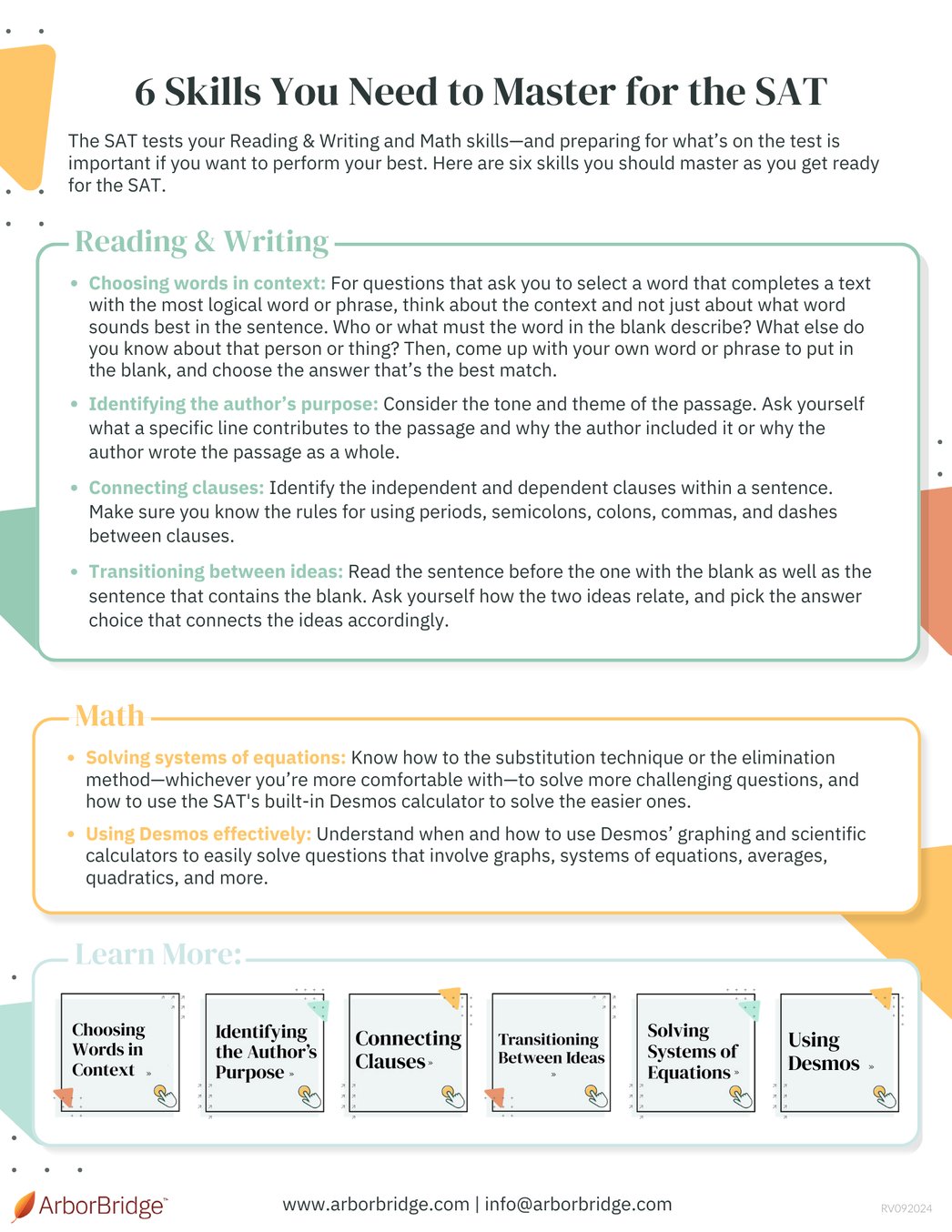In broad terms, the SAT tests students' Reading, Writing, and Math skills. However, if you've started studying for the exam, you know there's a lot more to it than that. Certain concepts and question types come up time and time again, and preparing for precisely what’s on the test is important if you want to perform your best.
Read on for 6 important skills to master as you get ready for the SAT, and click here to download our 1-page guide.
Reading
Finding evidence: Some questions on the Reading section will ask you to find evidence to support your answer to another question. One trick is to approach these pairs of questions together, looking at the lines of evidence before choosing an answer to the previous question. This method may feel backwards to you, but it's a great way to save time and improve your accuracy. By tackling the questions in this order, you can avoid getting tricked by answer choices that look appealing but are not supported by lines of evidence.
Identifying the author's purpose: Consider the tone and theme of the passage. Ask yourself two questions. First, what is the author trying to accomplish with this information? Second, what would the passage lose if this word, line, or paragraph were removed?
Writing
Connecting clauses: Knowing which punctuation marks to use between clauses is one of the most frequent concepts you'll encounter on the SAT. After identifying the independent and dependent clauses within a sentence, make sure you know the rules for using periods, semicolons, colons, commas, and dashes between clauses.
Transitioning between ideas: Read the whole sentence, both before and after the underlined portion. Ask yourself how the two ideas relate (contrast, support, cause & effect, or sequence). Pick the most succinct answer choice that connects the ideas accordingly.
Math
Solving systems of equations: Linear equations appear frequently on the SAT. Know how to use the substitution technique or the elimination method—whichever you’re more comfortable with—to find the solution to a system of linear equations.
Converting units: Watch out for problems that refer to one unit in the question prompt and another unit in the answer choices. Master the proportion chain to convert measurements into different units. Once you’ve written down all the important information and set up the correct ratio, the rest is simple arithmetic.
Need more individualized advice?
The recommendations above are general suggestions. If you have specific questions, reach out to our experts here. We’re happy to help in any way we can.
About ArborBridge
ArborBridge is the global leader in innovative, digital, one-on-one tutoring. With nearly a decade of experience teaching students online, ArborBridge supports students of all kinds: home schoolers, AP students, test preppers, and more. Our tutors specialize in creating personalized plans and in providing compassionate support for students and families.








